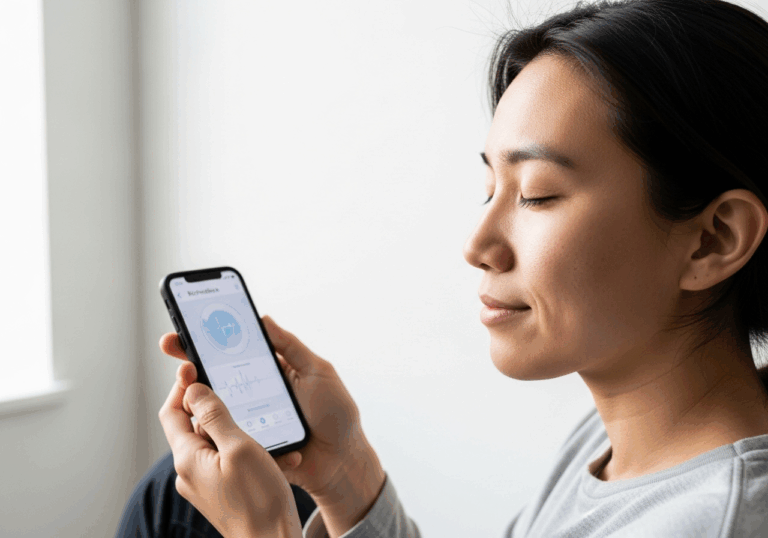Science-Backed Tips
Boost Your Mood with HRV Biofeedback
Increase heart rate variability by 25% in just 10 minutes.
📊 Did you know?
💡 Why It Matters
1️⃣
Increasing HRV by 25% can enhance emotional resilience, helping individuals manage stress more effectively.
2️⃣
Higher HRV is associated with improved mood stability, potentially reducing the risk of anxiety disorders.
3️⃣
Biofeedback techniques are cost-effective interventions that can be easily integrated into daily routines.
✅ Try These Micro-Tips
🎯
Practice HRV biofeedback breathing for 10 minutes daily to enhance mood stability.
🎯
Engage in breathing exercises at a rate of 6 breaths per minute to maximize HRV benefits.
🎯
Incorporate biofeedback sessions into your routine at least 5 times a week for optimal results.
🎯
Track your HRV metrics using a wearable device to monitor progress and adjust practices.
📚 The study
By improving HRV, individuals can experience better mood stability, which is crucial for managing stress effectively and potentially lowering the risk of anxiety disorders.
What makes HRV biofeedback particularly appealing is its cost-effectiveness and ease of integration into daily routines. With just a few minutes of practice, individuals can harness the benefits of biofeedback techniques to cultivate a calmer, more balanced emotional state. This study underscores the importance of adopting such interventions in our fast-paced lives, where stress and anxiety are prevalent.
By boosting HRV through biofeedback, we can empower ourselves to navigate life’s challenges with greater ease and resilience, ultimately leading to a healthier, more fulfilling life.
❓ Frequently Asked Questions ❓
Learn more
What is HRV biofeedback breathing?
HRV biofeedback breathing is a technique that involves controlled breathing exercises to enhance heart rate variability (HRV). This practice helps promote emotional resilience and mood stability by increasing parasympathetic tone.
How long should I practice HRV biofeedback breathing?
It is recommended to practice HRV biofeedback breathing for 10 minutes daily. This duration has been shown to effectively increase HRV and promote mood stability.
What is the optimal breathing rate for HRV biofeedback?
The optimal breathing rate for HRV biofeedback is approximately 6 breaths per minute. This rate maximizes the benefits of HRV enhancement.
How much can HRV increase with biofeedback breathing?
HRV can increase by approximately 25% after just 10 minutes of HRV biofeedback breathing. This significant boost supports emotional resilience and stress management.
What are the benefits of increasing HRV?
Increasing HRV is associated with improved mood stability and a reduced risk of anxiety disorders. Higher HRV enhances emotional resilience, helping individuals manage stress more effectively.
How often should I engage in biofeedback sessions?
For optimal results, it is recommended to incorporate biofeedback sessions into your routine at least 5 times a week. Consistent practice enhances the effectiveness of the technique.
Can HRV biofeedback be easily integrated into daily life?
Yes, biofeedback techniques are cost-effective interventions that can be easily integrated into daily routines. They require minimal time and can be practiced almost anywhere.
How can I track my HRV progress?
You can track your HRV metrics using a wearable device designed for this purpose. Monitoring your progress allows you to adjust your practices for better results.
What is the significance of the meta-analysis on HRV biofeedback?
The meta-analysis pooled data from 24 studies, demonstrating that HRV metrics significantly increase with biofeedback. This supports the effectiveness of HRV biofeedback in reducing anxiety and stress.
What is the relationship between HRV and mood stability?
Higher HRV is linked to improved mood stability, which can help reduce the risk of anxiety disorders. By enhancing HRV through biofeedback, individuals can foster better emotional health.





